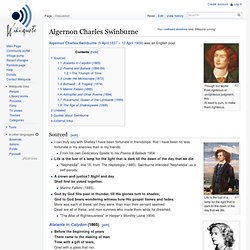

Special Feature: How to Read Like Bowie - David Bowie's Top 100 Books. David Bowie Is, the newest exhibit at the Art Gallery of Ontario, is an essential destination for fans of music, fashion and pop culture.

But book lovers should pay attention too; the curators of the exhibit, who had to select a mere 300 items from Bowie's personal archive of over 70,000, felt it was important to include many books that have affected the cultural chameleon. Curator Geoffrey Marsh describes Bowie as "a voracious reader" who is reputed to read as much as "a book a day". Marsh went on to speak about Bowie's interest in the life of the mind and its power to transcend the rigid class barriers of postwar England, the era where Bowie honed the early versions of his musical and cultural persona. Best of all, curators Marsh and Victoria Broackes have released a list of Bowie's favourite reads. So if you've ever wanted to read like one of the most influential musicians of the 20th century (and still going strong in the 21st!)
And one last fun Bowie fact? Mr. Money, Martin Amis, 1984. Aires impalpables: CERNUDA - POEMAS PARA UN CUERPO. Algernon Charles Swinburne. Though our works Find righteous or unrighteous judgment, this At least is ours, to make them righteous.

Algernon Charles Swinburne (5 April 1837 – 10 April 1909) was an English poet. Sourced[edit] Life is the lust of a lamp for the light that is dark till the dawn of the day that we die. Our way is where God knows And Love knows where: We are in Love’s hand to-day. Fear that makes faith may break faith; and a fool Is but in folly stable. I can truly say with Shelley I have been fortunate in friendships: that I have been no less fortunate in my enemies than in my friends. Atalanta in Calydon (1865)[edit] Before the beginning of years There came to the making of man Time with a gift of tears, Grief with a glass that ran… Poems and Ballads (1866-89)[edit] If love were what the rose is, And I were like the leaf, Our lives would grow together In sad or singing weather [...] Wilt thou fear that, and fear not my desire? Villon, our sad bad glad mad brother's name. The Triumph of Time[edit] Graphicpoetry.net - Registered at Namecheap.com.
Poetry. Do not stand at my grave and weep. Do Not Stand at My Grave and Weep is a poem written in 1932 by Mary Elizabeth Frye.

Although the origin of the poem was disputed until later in her life, Mary Frye's authorship was confirmed in 1998 after research by Abigail Van Buren, a newspaper columnist.[1] Full text[edit] Do not stand at my grave and weep, I am not there; I do not sleep. I am a thousand winds that blow, I am the diamond glints on the snow, I am the sunlight on ripened grain, I am the gentle autumn rain. When you awaken in the morning’s hush I am the swift uplifting rush Of quiet birds in circled flight. I am the soft stars that shine at night. Do not stand at my grave and cry, I am not there; I did not die.
Origins[edit] Mary Frye, who was living in Baltimore at the time, wrote the poem in 1932. Mary Frye circulated the poem privately, never publishing or copyrighting it. The poem was introduced to many in Britain when it was read by the father of a soldier killed by a bomb in Northern Ireland. BBC poll[edit] ... Rhetological Fallacies. Poems - AGE of&ASININITY.